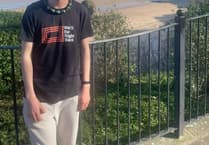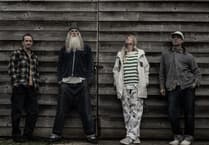In 1918 on the eleventh hour of the eleventh day of the eleventh month the armistice came into force and the guns fell silent. Once again peace reigned over Europe. The news of the signing of the armistice reached Tenby at about 10.30 a.m. on Monday 11 November 1918 via Milton aerodrome where it had been received by wireless. Shortly afterwards an official telegram was received and exhibited in the Post Office window in Tudor Square.
The sound of the Church bells of St. Mary’s and the firing of a canon on Castle Hill greeted the news. Houses were quickly decorated with flags and crowds of people gathered in the streets to congratulate themselves on the German surrender. Following a civic procession through the town a service of thanksgiving was held that afternoon at St. Mary’s Church. A holiday was quickly declared and all the shops in the town closed. Throughout the afternoon and evening all the streets were thronged with happy and excited crowds. A ‘Victory Dance’ was hastily arranged at the Public Hall and all the public houses had their full quota of merry makers. The Tenby Observer (14 November 1918) reported that outside of the Lion and Gate House Hotels the crowd was ‘so dense … at times that it is no exaggeration to say that one might easily have walked on their heads’.
The Government subsequently proclaimed that Saturday 19 July 1919 would be Peace Celebration Day. This Festival of Victory was observed throughout the United Kingdom and the British Empire. In Tenby the town council took the lead in organising the celebration and consulted with the townspeople by calling a public meeting. It was planned to include a dinner for all the local discharged and demobilised sailors and soldiers but this was abandoned because it was found impossible to get anyone to undertake the catering arrangements. A proposal for a large bonfire on North Cliff was also abandoned due to the difficulty of securing enough inflammable materials and the expense involved.
Peace Celebration Day started off wet but the rain cleared by noon and the afternoon was dry and warm. Householders lavishly decorated their streets with flags, bunting, streamers and garlands spanning the roadways. Cars, cycles and horse drawn vehicles were also suitably decorated. A general holiday had been proclaimed and all businesses in the town were closed. The programme of festivities started with a procession from the town hall in the High Street that wound its way through the town en route for the Castle Hill, followed by a large crowd. The Tenby Observer (24 July 1919) reported that ‘an immense crowd, perhaps the largest number of people ever gathered together on the occasion of a local function, assembled on Castle Hill’ where the town band played and local school children performed patriotic songs.
The Freedom of the Borough was presented to five Tenby soldiers: Sergeant William Llewellyn Hinds, Sergeant William George Brace, Corporal Percy Maroney, Rifleman Rupert Henry Hundley, and Private William Allan Jones. Enthusiastic cheers greeted the formal presentation of the Freedom made by the Chief Magistrate. Following the ceremony the procession reformed and the local school children were treated to tea in the Market Hall at the expense of the mayor, Major D. Hughes-Morgan. The Market Hall was suitable decorated with the flags of the victorious nations.
In the evening hundreds of discharged and demobilised sailors and soldiers together with their wives and families and the members of the St. John’s Hospital attended a smoking concert in the Market Hall.
A carnival procession, lead by the Town Band, commenced from the railway station yard at nine o’clock in the evening. Lorries and cars featured in the cavalcade along with numerous walking groups. A tableau of ‘Britannia’ mounted on a large lorry was reported as being particularly striking. At eleven o’clock a densely packed crowd in Tudor Square sang the National Anthem. This was followed by a fireworks display from the old pier that brought the days celebration to a close.
(Extract from ‘Tenby Remembers’. Courtesy of Tenby Museum & Art Gallery).




